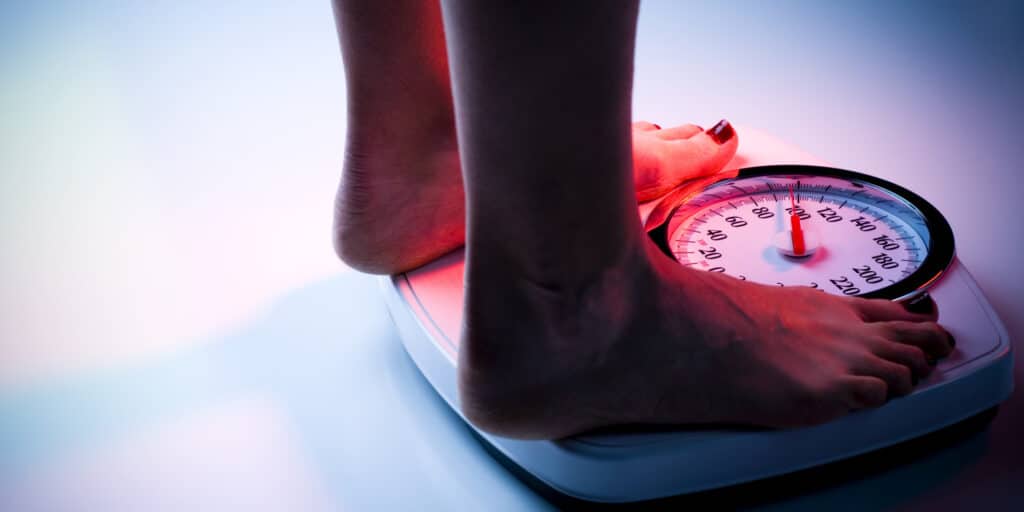Introduction
Does Massage Help Weight Loss: In the pursuit of achieving and maintaining a healthy body weight, individuals often explore a multitude of strategies and interventions. One such method that has gained attention and popularity is massage therapy. While massage is traditionally associated with relaxation and stress relief, there is a growing curiosity about its potential role in aiding weight loss. This intriguing intersection of wellness practices raises several questions: Can massage really help with weight loss? Are there any scientific foundations behind this claim, or is it merely a wellness trend? In this exploration, we will delve into the connection between massage and weight loss, examining both the anecdotal experiences and the scientific evidence to shed light on whether massage can be a beneficial addition to one’s weight management journey.
Some individuals find that regular massage sessions promote mindfulness and self-awareness, which can extend to their eating habits. By becoming more attuned to their bodies, people may make healthier food choices and eat in moderation, thus supporting their weight management goals.
It’s important to note that while there are potential connections between massage and weight loss, the scientific evidence supporting these claims is limited and often inconclusive. The impact of massage on weight loss is likely to be indirect, and it should not replace conventional weight loss strategies such as a balanced diet and regular physical activity.
Ultimately, incorporating massage therapy into a holistic wellness routine can be a valuable tool for managing stress, promoting relaxation, and enhancing overall well-being. Whether it directly contributes to significant weight loss or simply complements other healthy lifestyle choices, the benefits of massage extend beyond the physical and can positively impact one’s weight management journey.

Can massage reduce belly fat?
In one study, participants shaved an average of around 2 mm off their waists through massage alone. This study evaluated the effect of 3 different massage techniques: mechanical massage, connective tissue manipulation, and manual lymphatic drainage.
Understanding Belly Fat
Before we discuss the potential effects of massage, it’s important to understand the different types of belly fat. Subcutaneous fat lies just beneath the skin and is relatively harmless in small amounts. However, visceral fat, which is stored deep within the abdominal cavity and surrounds vital organs, is the more dangerous type. Excess visceral fat is linked to a higher risk of various health issues, including heart disease, diabetes, and certain cancers.
The Claim: Can Massage Reduce Belly Fat
Increasing blood circulation: Improved blood flow to the abdominal area could, in theory, enhance the transport of fatty acids, aiding in fat breakdown and removal.
Stimulating the lymphatic system: Massage may promote lymphatic drainage, potentially assisting the body in removing toxins and excess fat.
Reducing stress: Chronic stress can lead to weight gain, particularly around the abdomen. Massage is known for its stress-reducing effects, which might indirectly help manage belly fat.
Enhancing muscle tone: Certain massage techniques, such as deep tissue or Swedish massage, may stimulate and tone abdominal muscles, giving the appearance of a flatter stomach.
Which massage is best for weight loss?
Massages not only help you relax and destress but also aid weight loss when done right. These massages work on dissolving your cellulite and fat buildup to help you get back in shape. Vacuum massage, aromatherapy massage, and lymphatic massage are a few of the most effective massages for weight loss.
Swedish Massage: This gentle, relaxing massage can help reduce stress, which may indirectly support weight loss by preventing stress-related overeating. It also improves circulation, aiding in the overall metabolic process.
Deep Tissue Massage: Deep tissue massage focuses on the underlying muscle layers and can help improve muscle tone. While it may not directly lead to weight loss, it can contribute to a more toned appearance.
Lymphatic Drainage Massage: This specialized massage technique aims to stimulate the lymphatic system, potentially reducing water retention and bloating, which can make you appear slimmer.
Hot Stone Massage: The heat from the stones can relax muscles and promote circulation. This can indirectly help with muscle recovery and relaxation, supporting a more active lifestyle conducive to weight loss.
Does oil massage reduce belly fat?
Benefits of Massage Oils for Belly Fat Loss
Massage oils can help the body cope with stress and anxiety, heal muscle pain, swelling, tightness, and enhance overall mood. Massages with massage oil enhance the overall texture of your skin by unclogging pores of excess fat, which increases metabolism and lowers belly fat.
The Claim: Can Oil Massage Reduce Belly Fat
Stimulation of Blood Flow: Proponents of oil massage argue that the rubbing and massaging action can enhance blood circulation to the abdominal area. Improved circulation may help transport fatty acids away from fat cells for energy expenditure.
Lipolysis: Some claim that specific massage techniques, particularly with oils, can stimulate lipolysis—the breakdown of fat cells—and promote the release of stored fat for energy.
Detoxification: It is often suggested that oil massages can assist the body in detoxifying and eliminating toxins, potentially aiding in weight loss and fat reduction.
The Scientific Perspective
While there is some logic behind these claims, scientific evidence supporting oil massages as a direct method for reducing belly fat is limited. There have been few comprehensive studies specifically examining this topic.
Most research on massage therapy has focused on its potential benefits for relaxation, pain relief, stress reduction, and muscle recovery rather than targeted fat reduction. Additionally, the complex physiological processes involved in fat loss primarily depend on factors such as calorie expenditure, diet, and genetics, making it challenging to attribute significant weight loss to oil massages alone.
Can a body massager help lose weight?
Not only can percussion massage help you to lose weight and maintain a lower, healthier weight, but it can also improve your muscle tone and balance so that your body appears tighter, more toned, healthier and slimmer.
The Claim: Can a Body Massager Help with Weight Loss
Increased Blood Circulation: Body massagers, especially those with vibrational settings, are believed to improve blood circulation in the targeted area. Enhanced blood flow may help transport fatty acids away from fat cells for energy expenditure.
Lymphatic Drainage: Some proponents suggest that massagers can stimulate the lymphatic system, potentially aiding in the removal of toxins and excess fluids, which may result in temporary weight loss due to reduced water retention.
Muscle Activation: Vibrational massagers claim to stimulate and activate muscles, potentially increasing calorie expenditure and muscle tone, both of which can contribute to weight loss.
Cellulite Reduction: Body massagers are sometimes marketed as tools to reduce cellulite, which can give the appearance of smoother, leaner skin.
The Scientific Perspective
While there is some logic behind these claims, scientific evidence supporting the use of body massagers as a primary method for weight loss is limited. Most studies on these devices have focused on their potential benefits for pain relief, muscle recovery, and relaxation.
Does massage burn calories?
An hour-long massage can burn more calories than you might think — 230 calories — the same as an hour of light weight training. And an hour of passionate playtime kills 270 calories, which would burn off a frosted cupcake.
The Claim: Does Massage Burn Calories
Increased Heart Rate: Some types of massages, particularly those with more vigorous techniques, can temporarily raise the heart rate, similar to light exercise. An elevated heart rate theoretically leads to a higher calorie burn.
Muscle Activation: During a massage, muscles are kneaded, stretched, and manipulated, which may activate muscle tissue and expend energy, potentially contributing to calorie loss.
Improved Blood Circulation: Enhanced circulation as a result of massage might assist in the transportation of oxygen and nutrients to muscles and tissues, possibly enhancing metabolic activity and calorie burn.
The Scientific Perspective
While there is some logic behind the claims that massage can burn calories, the scientific evidence supporting this idea is limited. Massage therapy is primarily regarded as a passive activity that does not significantly elevate the heart rate or require substantial energy expenditure compared to activities like exercise.
Furthermore, the calorie burn during a massage session is typically minimal and likely insufficient for weight loss or significant calorie reduction. The primary purpose of massage is to promote relaxation, relieve muscle tension, and improve overall well-being, rather than serving as a weight loss strategy.
How often should I get a massage?
For general tune-ups, consider scheduling a massage every four to six weeks. If you have a chronic condition or specific areas of strain and tension, consider scheduling a message every one to three weeks. If you’re still unsure how often to get a massage, consider scheduling a consultation appointment.
Budget and Time Constraints
Consider your budget and time availability when deciding on the frequency of massages. Frequent massages can become costly, so it’s essential to find a balance that works for your financial situation. Additionally, make sure you have the time to commit to regular sessions.
Body’s Response
Pay attention to how your body responds to massages. Everyone is unique, and your body may require more or less frequent sessions based on how it reacts to treatment. If you find that the benefits of your massage wear off quickly, you may need more frequent sessions.
Consultation with a Massage Therapist
Seek advice from a qualified massage therapist. They can assess your individual needs, address specific concerns, and recommend an appropriate frequency based on their expertise.
Maintenance vs. Treatment
Consider whether you’re using massage as a form of maintenance for general well-being or as a treatment for a specific issue. Maintenance typically requires less frequent sessions, while treatment may necessitate more frequent visits.
Progress Over Time
As you continue with your massage regimen, regularly reassess your progress. If you experience significant improvement in your condition or stress levels, you may be able to decrease the frequency of your sessions.
What is a slimming body massage?
A slimming massage makes use of faster deep pressures that reactivate the fat release process. This in order to eliminate localized fat as well as body imperfections, resulting in a better figure that is firmer and younger looking.
Key Features of Slimming Body Massage
Localized Treatment: Slimming body massages are primarily targeted at specific problem areas such as the thighs, buttocks, abdomen, and arms. These areas often harbor stubborn fat deposits and cellulite.
Specialized Techniques: Therapists use specialized massage techniques that include deep tissue massage, lymphatic drainage, and kneading to break down fat cells, improve circulation, and stimulate lymphatic flow.
Tools and Products: Some slimming massages incorporate the use of tools, such as wooden rollers or cupping devices, along with slimming creams or oils. These tools aid in the manipulation of tissues and may enhance the effectiveness of the massage.
Frequent Sessions: Achieving desired results often requires a series of sessions, typically spread over several weeks or months. The number of sessions needed varies depending on individual goals and the extent of the issue being addressed.
Benefits of Slimming Body Massage
Cellulite Reduction: Slimming massages are often sought to reduce the appearance of cellulite, which is caused by fat deposits pushing against connective tissue. The massage techniques can help break down these fat deposits and promote smoother skin.
Improved Circulation: The massage strokes used in slimming body massage can enhance blood circulation, which may help with fat mobilization and lymphatic drainage.
Lymphatic Drainage: Many slimming massages incorporate lymphatic drainage techniques to facilitate the removal of waste and toxins from the body, potentially aiding in overall detoxification.
Stress Reduction: Like other forms of massage, slimming body massage can provide relaxation and stress relief, which may indirectly contribute to a healthier lifestyle and better weight management.
Enhanced Skin Appearance: The stimulation of the skin and tissues during the massage can improve skin tone and texture, leaving the skin looking more firm and toned.
What are the benefits of thigh massage?
A thigh massage helps reduce pain by interrupting the signal sent from the brain to the nerves. Interrupting the signal stops the nerves from causing pain. A thigh massage also helps reduce pain and muscle tightness within the thighs by increasing the temperature of the muscle.
Muscle Relaxation
One of the primary benefits of thigh massage is muscle relaxation. The thigh muscles, including the quadriceps and hamstrings, can become tense and tight due to various factors such as physical activity, prolonged sitting, or stress. A skilled massage therapist can use techniques to release tension in these muscles, promoting relaxation and reducing muscle soreness.
Improved Blood Circulation
Thigh massage can significantly enhance blood circulation in the targeted area. Improved circulation not only helps deliver vital oxygen and nutrients to the muscles but also assists in the removal of waste products and toxins. This can result in better overall muscle function and reduced muscle fatigue.
Pain Relief
Thigh massage can be an effective way to manage and alleviate pain. Individuals who experience conditions like muscle strains, tight IT bands, or even sciatica may find relief through targeted thigh massage. By releasing muscle tension and promoting relaxation, it can reduce pain and discomfort in the thigh region.
Enhanced Athletic Performance
Athletes often benefit from thigh massages as part of their training and recovery routines. Regular massage can help improve muscle flexibility, reduce the risk of injury, and aid in post-exercise recovery, allowing athletes to perform at their best.
Reduction of Cellulite
Thigh massage techniques may assist in the temporary reduction of cellulite. By stimulating blood flow and lymphatic drainage, massage can help minimize the appearance of cellulite, providing smoother-looking skin.
Stress Reduction
Massage, including thigh massage, is well-known for its stress-reduction properties. The relaxation induced by the massage can lower stress levels, promote a sense of well-being, and improve sleep quality.
Enhanced Range of Motion
Thigh massage can help increase the range of motion in the hip and knee joints by releasing tight muscles and improving flexibility. This is particularly beneficial for individuals with mobility issues or those recovering from injuries.
Improved Skin Health
The friction and pressure applied during thigh massage can stimulate the skin and promote healthy blood flow, potentially improving the appearance and overall health of the skin in the thigh area.

Conclusion
The question of whether massage helps with weight loss has been explored from various angles, considering both anecdotal experiences and scientific insights. While massage therapy offers a range of potential benefits for overall well-being, including stress reduction, improved circulation, and mindfulness, it should be viewed as a complementary element in a holistic approach to weight management.
Massage’s influence on weight loss is primarily indirect. It can aid by mitigating stress, which plays a role in weight gain, and by potentially encouraging physical activity through enhanced relaxation and muscle recovery. Additionally, certain massage techniques like lymphatic drainage may lead to temporary reductions in body weight due to fluid loss.
However, it’s crucial to emphasize that massage alone is unlikely to be a standalone solution for significant weight loss. A well-rounded approach that includes a balanced diet, regular exercise, and healthy lifestyle choices remains the foundation for achieving and maintaining a healthy body weight.

